You are here
Catching up with Matt Farrow in 2023
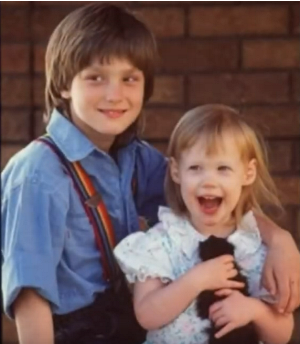 Matt Farrow is famous as the person who received the world’s first cord blood transplant. This took place on 6 Oct. 1988, when he was five years old. The story of that transplant has been told over and over within the cord blood community, but the official version of the story does not talk about the dark side of being a medical pioneer.
Matt Farrow is famous as the person who received the world’s first cord blood transplant. This took place on 6 Oct. 1988, when he was five years old. The story of that transplant has been told over and over within the cord blood community, but the official version of the story does not talk about the dark side of being a medical pioneer.
Alison Farrow, Matt’s baby sister, was the cord blood donor that saved Matt’s life. Matt was born with a rare genetic condition called Fanconi Anemia (FA). Children that have FA often experience bone marrow failure before age ten and cannot survive without a stem cell transplant. When Alison’s parents gave her cord blood to her brother Matt, she became the world’s first “savior sibling,” before that phrase was even invented. But Matt’s family did not know this at the time, and they did not even plan for it. His parents decided to have a third child because the doctors had given them such a grim prognosis for Matt that they did not expect him to survive. Then it was discovered that, by an incredible stroke of fate, baby Alison did not have FA and was a perfect match to be a transplant donor for Matt. As a result of the transplant, Matt’s blood is now genetically identical to his sister Alison, including the fact that his blood has XX chromosomes like a female.
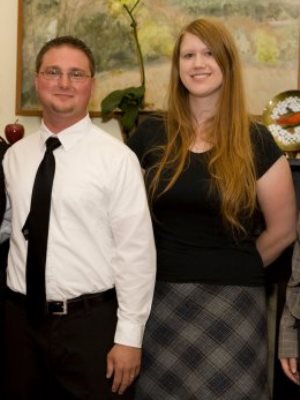 Back in 1988, using cord blood for a stem cell transplant instead of bone marrow was considered very experimental, and the only place to treat the first patient was with Dr. Eliane Gluckman in Paris. The trip was arranged by Dr. Joanne Kurtzberg and Dr. Hal Broxmeyer in the United States. Matt’s parents left their jobs and moved to France, even though they did not speak French. They brought their three children with them, not knowing if one would come back alive. It was a big gamble and very stressful for the family. Matt’s father asked him if he wanted to take this chance, and they say that Matt’s answer was that “I want to help other kids like myself.” During and after the transplant, Matt had to stay in an isolation room with air pressure blowing out. Aside from hospital staff, only his mother could gown up and visit him inside isolation. Matt spent four months, at five years old, in that solitary confinement.
Back in 1988, using cord blood for a stem cell transplant instead of bone marrow was considered very experimental, and the only place to treat the first patient was with Dr. Eliane Gluckman in Paris. The trip was arranged by Dr. Joanne Kurtzberg and Dr. Hal Broxmeyer in the United States. Matt’s parents left their jobs and moved to France, even though they did not speak French. They brought their three children with them, not knowing if one would come back alive. It was a big gamble and very stressful for the family. Matt’s father asked him if he wanted to take this chance, and they say that Matt’s answer was that “I want to help other kids like myself.” During and after the transplant, Matt had to stay in an isolation room with air pressure blowing out. Aside from hospital staff, only his mother could gown up and visit him inside isolation. Matt spent four months, at five years old, in that solitary confinement.
When Matt and his family finally got home to Salisbury, North Carolina, they tried to pick up and lead normal lives. Matt started school in the fall of 1989, although unlike other kids he was allowed to take naps whenever he felt tired. Matt never went to the same school as his siblings, because one sister was five years ahead of him and the other was five years behind. Matt would take the school bus home and walk a few blocks to his house. He found out later that his mother had neighbors keeping an eye on him as he walked that route. He remembers the day that he arrived home to find a truck from a local TV station in the family driveway. That was the first time that the family was covered by the media because of Matt’s transplant.
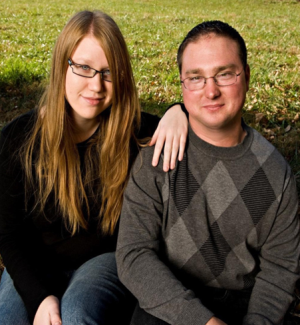 In addition to bone marrow failure, there are many symptoms and birth defects associated with FA that are not cured by a stem cell transplant. The website Fanconi.org has a full list of symptoms associated with FA, but a few common ones are: short stature, missing or extra fingers, kidney and urinary tract anomalies, and learning disabilities. Matt had multiple surgeries as a child to correct physical abnormalities, starting when he was a baby and continuing to age 16. Matt did a good job of hiding these issues and many of his friends did not know about them. Thanks to the widespread use of stem cell transplants in recent decades, more children with FA are living to adulthood. In 2017, for the first time, the majority of the patient registry of the Fanconi Anemia Research Fund (FARF) shifted to people over age 18.
In addition to bone marrow failure, there are many symptoms and birth defects associated with FA that are not cured by a stem cell transplant. The website Fanconi.org has a full list of symptoms associated with FA, but a few common ones are: short stature, missing or extra fingers, kidney and urinary tract anomalies, and learning disabilities. Matt had multiple surgeries as a child to correct physical abnormalities, starting when he was a baby and continuing to age 16. Matt did a good job of hiding these issues and many of his friends did not know about them. Thanks to the widespread use of stem cell transplants in recent decades, more children with FA are living to adulthood. In 2017, for the first time, the majority of the patient registry of the Fanconi Anemia Research Fund (FARF) shifted to people over age 18.
Matt has repeatedly given testimonial talks expressing his gratitude for the extra years that the cord blood transplant has given him. Here are some quotes from Matt: “My story is not the only successful cord blood story. I’ve met many, many families that have read about our story and have either donated their child’s cord blood or kept it for their family. And I have met many families where they kept it for themselves and have demanded that their doctors bank their child’s cord blood, and it saved their kid’s life. I had a 10-minute awkward hug with a mom one time because of this very thing. I also have a very good special friend of mine that carries this same disease that I have, that her bone marrow donor backed out three weeks before her transplant, but luckily some mom donated and a cord blood unit was quickly discovered, she is now living healthy as well.” … “Knowing the benefits of cord blood, I can’t allow it to just be thrown away as medical waste. It truly saddens me that there are still people that do not know the importance of cord blood. So sharing my story and other stories like it to nurses, physicians, midwives, helps me to help you to talk with individual families of the importance and the second chance that it can possibly bring.”
 Matt got married in 2006 at age 23, to a woman that he knew from high school, and together they raised her son Elijah. Because of the chemotherapy and radiation that Matt went through before his stem cell transplant, he is sterile and cannot have children of his own. Matt and his wife used to live just down the street from his older sister, who has a son the same age as Elijah, and everybody was close during those years. Then in 2013 at age 30, Matt moved with his wife and son to Florida, where he took a job managing the supply inventory for a cord blood bank. While he was working there, his younger sister Alison had her first child in 2016. Unfortunately, in 2018 Matt’s marriage came apart and that same year Matt’s employer went out of business. Matt would like to get another job in a medical field, for example with a cord blood bank, but he is limited by his lack of a college degree or vocational training beyond high school. Although both of his sisters completed college degrees, Matt has failed out of college three times. He has learning disabilities, including ADHD and dyslexia, which may be related to the FA diagnosis.
Matt got married in 2006 at age 23, to a woman that he knew from high school, and together they raised her son Elijah. Because of the chemotherapy and radiation that Matt went through before his stem cell transplant, he is sterile and cannot have children of his own. Matt and his wife used to live just down the street from his older sister, who has a son the same age as Elijah, and everybody was close during those years. Then in 2013 at age 30, Matt moved with his wife and son to Florida, where he took a job managing the supply inventory for a cord blood bank. While he was working there, his younger sister Alison had her first child in 2016. Unfortunately, in 2018 Matt’s marriage came apart and that same year Matt’s employer went out of business. Matt would like to get another job in a medical field, for example with a cord blood bank, but he is limited by his lack of a college degree or vocational training beyond high school. Although both of his sisters completed college degrees, Matt has failed out of college three times. He has learning disabilities, including ADHD and dyslexia, which may be related to the FA diagnosis.
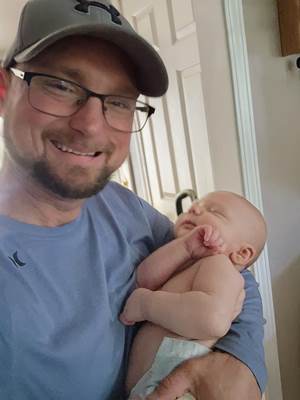 Matt is one of a handful of Fanconi Anemia survivors that are near age 40. Whenever companies use Matt’s story for publicity, they make it sound as if the cord blood transplant “cured” his FA, but that is far from true. Being diagnosed with FA is a lifelong challenge. Even after having a stem cell transplant to save them from bone marrow failure, FA patients are still much more prone to cancer, and many die relatively young. Matt has lost dozens of friends that he met through support groups for FA patients. On the one hand, Matt is remarkably healthy for an FA patient, but on the other hand living with FA is a lot like waiting for a sword to drop. Due to the roller coaster of health issues and survivor guilt, Matt has been diagnosed with PTSD. As Matt has said, “I have been through more than most people can ever imagine.” Despite everything, Matt is a deeply spiritual person and stays upbeat most of the time.
Matt is one of a handful of Fanconi Anemia survivors that are near age 40. Whenever companies use Matt’s story for publicity, they make it sound as if the cord blood transplant “cured” his FA, but that is far from true. Being diagnosed with FA is a lifelong challenge. Even after having a stem cell transplant to save them from bone marrow failure, FA patients are still much more prone to cancer, and many die relatively young. Matt has lost dozens of friends that he met through support groups for FA patients. On the one hand, Matt is remarkably healthy for an FA patient, but on the other hand living with FA is a lot like waiting for a sword to drop. Due to the roller coaster of health issues and survivor guilt, Matt has been diagnosed with PTSD. As Matt has said, “I have been through more than most people can ever imagine.” Despite everything, Matt is a deeply spiritual person and stays upbeat most of the time.
This year, Matt’s donor sister Alison was due with her second child in June 2023. Matt and Alison have always been close, and Matt felt strongly that he wanted to gift her cord blood storage for this child. But since Matt’s job does not pay well, it is hard for him to afford the cost of private cord blood banking. Matt had assumed that one of the family cord blood banks would give him free storage in exchange for a publicity commitment. But when he started looking for a bank, Matt found that some companies had no interest in working with him because his story has already been told, so it is not fresh publicity. By this time, Alison was experiencing pregnancy complications and her due date had been moved up to May. Suddenly, finding a bank to help the Farrow family turned into an emergency and the Parent’s Guide to Cord Blood Foundation helped to contact bank directors.
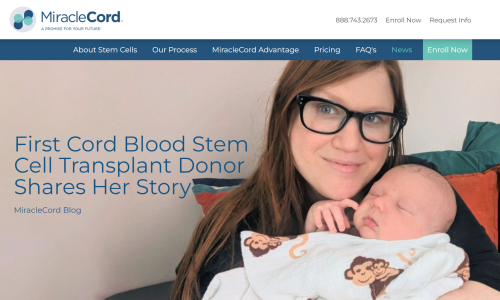 Fortunately, MiracleCord made the commitment to help the Farrow family. With the due date steadily moving up, time was of the essence. The cord blood collection kit arrived in the nick of time, while Alison was already at the hospital in the late stages of labor. Alison has written a blog telling her story as the first cord blood donor and how she feels now that she is a mother with children of her own. It is ironic that it was MiracleCord that came through for Alison, because Matt’s parents always called Alison their miracle baby.
Fortunately, MiracleCord made the commitment to help the Farrow family. With the due date steadily moving up, time was of the essence. The cord blood collection kit arrived in the nick of time, while Alison was already at the hospital in the late stages of labor. Alison has written a blog telling her story as the first cord blood donor and how she feels now that she is a mother with children of her own. It is ironic that it was MiracleCord that came through for Alison, because Matt’s parents always called Alison their miracle baby.
Matt says, “It’s crazy to hear your name as the world’s first or be called a hero. But I want to tell my story to help other kids.” This motivation has never changed. “It took time to learn to take care of myself. Sometimes it’s overwhelming – Is this really me? I don’t feel that important. I’m just blessed or lucky.”


